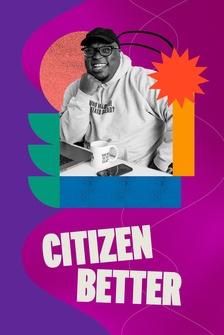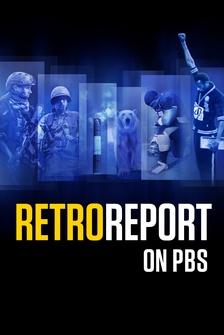STEPHANIE SY: Tonight on PBS News Weekend, why rates of cancer among millennials and Gen X are on the rise in America, then, as American women dominate in Paris, we explore the history of equity at the Olympics and where things stand today, and why debris left behind in outer space is a growing problem down on Earth.
MAN: If this is not tackled, it just means that the expected lifetime of anything that we put up there is going to get shorter and shorter.
STEPHANIE SY: Good evening.
I'm Stephanie Sy.
John Yang is away.
The Trump campaign says it was hacked by foreign sources hostile to the U.S. and pointed toward Iran.
POLITICO was the first to report the hack, saying they began receiving emails in late July from an anonymous account with documents from inside the Trump campaign.
They appeared to be from a senior campaign official and were related to Trump's running mate, J.D.
Vance.
Now fellow Republicans are blaming the Biden administration, which they say has failed to hold Iran accountable.
REP. MICHAEL WALTZ (R) Florida: They tried to hack his campaign, or did hack his campaign this week.
They're trying to kill him, and we know from the intelligence community, Iran doesn't want Trump back.
Why?
Because he held them accountable.
STEPHANIE SY: Microsoft reported on Friday, it was aware a presidential campaign had been targeted in an attack by Iranian hackers, but did not specify which campaign.
The Israeli military says it is searching for multiple terrorists after a deadly shooting in the occupied West Bank, defense forces say Palestinian gunmen opened fire from inside a car hitting two Israelis.
One was killed, another was wounded.
Settler violence is on the rise in the area as the war between Israel and Hamas stretches into its 10th month.
Brazilian officials say the remains of all 62 people inside a plane that went down last week in Sao Paulo state have been recovered from the crash site.
Families of those killed in the plane crash gathered in Sao Paulo to identify loved ones.
CAMILA OLIVEIRA DUARTE DE ARUAJO, Cousin of Victim (through translator): The news was heartbreaking for everyone, for his aunts, for his mother, his mother is torn apart.
Losing a child is already difficult in any situation, let alone this one.
STEPHANIE SY: Now medical examiners will collect DNA samples in order to match those remains to families.
Investigators are analyzing flight recorded data, and preliminary results are expected within 30 days.
The search is on for the bodies of those killed in a landfill collapse in Uganda.
The Red Cross says at least 18 people were killed, including two children after the massive site caved from heavy rain, those same storms are also slowing rescue teams.
The landfill is in an impoverished area where women and children often dig through the piles to find scrap materials they can get paid for.
American gymnast Jordan, Chiles is in the center of a storm surrounding one Olympic bronze medal.
The International Olympic Committee stripped Chiles of the medal today, but the U.S. Olympic Committee says it will appeal the decision.
She won bronze last week for her floor routine, but only after her coach questioned the scoring and submitted an inquiry, an inquiry Olympic official said came after the one minute time limit for challenging scores.
Romanian gymnast Ana Barbosu, who was elevated back to third place in the competition.
The U.S. picked up its final two gold medals of the Paris Olympics to close out the games at the top of the medal table.
First American cyclist, Jennifer Valente, cruise to victory in the women's Omnium, a multi race track cycling event, then in an adrenaline filled women's basketball final Team USA beat France by one point.
The win was the eighth consecutive title for the women's team, and tied the US with China for the most gold medals at 40.
And Paris celebrated the closing ceremony with the official hand over to Los Angeles for the 2028 Summer Games.
Still to come on PBS News Weekend, the push for gender equity at the Olympics and what is being done to tackle the growing problem of debris left behind in space.
(BREAK) STEPHANIE SY: While cancer deaths in the US have decreased in recent years, experts say one age group has seen an overall rise in cancer rates younger Americans.
William Brangham has the latest on the shifting demographics and what can be done to address it.
WILLIAM BRANGHAM: They're called early onset cancers, which means cancer among adults under 50, and they are on the rise.
A groundbreaking report from the American Cancer Society looked at rates of 34 different kinds of cancer over several decades and found that 17 of them were more prevalent in millennials and Gen Xers.
So what is going on here?
Doctor Karen Knudsen is the CEO of the American Cancer Society.
Doctor Knudsen, thank you so much for being here.
I think the findings in this caught a lot of people by surprise.
When you look at the overall study, what stands out most to you?
DR. KAREN KNUDSEN, CEO, American Cancer Society: Well, you know, there are some surprises here, but in fact, we've been seeing some early indicators about this rise in cancers at an earlier age over the last several years, early onset colorectal cancer, I think, was the canary in the coal mine here, where we saw declining incidents in populations in the 65 and above, but rising in those that are 50 and younger.
These are ages for which we previously not thought about someone being at risk for colorectal cancer.
So clearly, something is changing, and this new study highlights that with 50 percent as you said, of the studies that of the cancers that we looked at on the rise in Gen xers and Millennials as compared to Baby Boomers.
WILLIAM BRANGHAM: Do we know why this is happening?
Because, again, the traditional I'm no oncologist, but the traditional understanding is older people tend to get more cancers.
You get cancer as you get older.
Why is this happening with younger people?
KAREN KNUDSEN: So what that is true, not for all, but for most cancers, age is a risk factor.
So that is without question, true.
But when we look at these cancer rates, they are sometimes two to three times higher in incidence for the Gen X and Millennial population as compared to Baby Boomers.
So we look at those data, we think that the typical risks are still at play.
Obesity.
10 of those 17 cancers are linked to obesity.
Lifestyle.
So sedentary lifestyle, of course, increases cancer risk alongside an unhealthy diet, lack of fruits, vegetables, grain fiber, et cetera.
So we know that those typical cancer risks are at play.
But there must be something else, because these rates are so different as compared to the previous generation, the baby boomers.
WILLIAM BRANGHAM: One of the things we also are concerned about is, if you get cancer, whether or not it ends up ending your life.
What do we know about cancer death rates?
KAREN KNUDSEN: That's right.
So when we actually looked in these three different age populations, we could follow cancer mortality as well in a subset of them, and we saw five actually that were of increased mortality rates in Gen X and Millennial populations.
It was liver cancer, specifically for women, uterine cancer, gallbladder cancer, testicular cancer, which is not a cancer of aging, and colorectal cancer, which we talked about.
So these leave then open questions for which more cancer research will be needed in order to address and we can speculate as to what are some of these additional exposures that someone may have been subject two, or could it be a compendium of exposures, diet and lifestyle?
What I would say is that what we know right now is of all the cancers that we track every year, our own research estimates that up to 40 percent of them are preventable due to behavior modification, things like having that healthy diet, staying active, maintaining a healthy body weight.
Of course, don't smoke, limit alcohol and get screened.
So we know that early detection saves lives, and that increase, that increased survivorship is, of course, something that is well within means for screenable cancers.
WILLIAM BRANGHAM: On that issue of screening, given what this study reflects, do you think we ought to be changing the guidance that we give to not just to doctors, but to individuals, as far as when you get checked?
How often you get checked?
KAREN KNUDSEN: Such an important question.
So it's important to remember that screening is not just about your age, that's one portion, but it's also about your genetics, if you know it, your family history, your own medical history, and your risk of exposures.
So never too early to when you are at your physician, ask and take ownership of it on your own.
What is the right screening plan for me, so that all of those different criteria can be taken into account.
Now, as relates to cancer screening guidelines, we of course, look at this regularly.
We are in the process right now of rewriting our prostate cancer screening guideline, but we were the first at the American Cancer Society to drop first colonoscopy from age 50 for people of average risk to age 45 because of these trends of early onset.
So we will continue to monitor and determine whether or not the screening guidelines require additional modification the science will lead us.
WILLIAM BRANGHAM: Do you think younger people are getting the news about this?
Do you feel like that this message is percolating out into society?
KAREN KNUDSEN: I think that they are and hearing reports like this can help them take agency over their own health, those prevention behaviors.
We talked about how this discussion about screening, but also don't ignore symptoms.
So if you're 44 years old and you're experiencing something that seems like it could be associated with colorectal cancer risk.
Don't wait.
Be seen and have that discussion with your physician, even if you're too young to technically have had your first colonoscopy.
Don't ignore symptoms.
But it's also important to note that on balance, there's good news as well for cancers overall since 1991 which was the high water mark for cancer in this country, we have reduced the overall cancer mortality rate by 33 percent so there is more hope than ever before, which is altogether more reason to not ignore symptoms, take agency over your own health, for prevention, but also having symptoms addressed.
WILLIAM BRANGHAM: Like that there's at least a little bit of good news in that.
Doctor Karen Knudsen, CEO of the American Cancer Society, thank you so much for joining us.
KAREN KNUDSEN: My pleasure.
Thank you for having me.
STEPHANIE SY: We turn now to the skies, where it's not just the moon orbiting the Earth.
Laura Barron-Lopez reports on the growing problem of human made debris in space.
LAURA BARRON-LOPEZ: Mankind's trash litters our planet from local parks to the depths of the ocean.
But it's not just on Earth.
Debris from everything we've launched into space since the 1950s is clogging Earth's orbit, that space junk is threatening our technology down here and up there.
For more on what's at stake and how we can manage space junk going forward, we turn to Marcus Holzinger, Professor of Aerospace Engineering at the University of Colorado, Boulder.
Professor Holzinger, thank you so much for joining.
When we say space junk or space debris, what exactly are we talking about, and how much is in Earth's orbit?
MARCUS HOLZINGER, University of Colorado Boulder: Great question.
So when we're talking about space debris, we're talking about mostly anthropogenic or human made pieces of debris.
So these are defunct satellites, rocket bodies that have been expended and left up in orbit, as well as parts of spacecraft or parts of rocket bodies that have been up there now for an excess of 50 years, and even all the way up to the current time.
There are about 40,000 objects that we're tracking right now on orbit.
But there are a lot of objects that are much too small for us to actually track, and some estimates put that number between a half a million and a million objects up there, some almost the size of a softball, and of course, others getting down to the size of flecks of paint.
LAURA BARRON-LOPEZ: And how much of our technology and infrastructure depends on access to the satellites up there, and how does the space debris impact that?
MARCUS HOLZINGER: So there are a couple of really big important things to remember.
Number one is that our lives as they exist right now cannot exist without continued access to space and low Earth orbit.
Most of our weather prediction activities come from satellites taking pictures from low Earth orbit.
A lot of our infrastructure in terms of timing or GPS, also directly comes from spacecraft upon orbit.
If you can imagine a day without space, imagine a day where none of your credit cards work or.
You have no idea when to actually harvest food stuffs to avoid, for example, a great big thunderstorm or hail storm.
So really, it's no exaggeration to say that it is absolutely true that the modern way of life depends greatly upon continued access to space.
LAURA BARRON-LOPEZ: So essentially all of this junk up there could really eventually harm our day to day lives.
I mean, does the size of that space junk up there matter?
MARCUS HOLZINGER: It does there are a couple different ways to think about that.
In some orbits, the density of space debris is high enough to where the rate of close approaches or potential collisions is such that continued collisions would actually cause cascading creation of debris and further collisions that's famously known as the Kessler syndrome.
In most orbits that's currently not the problem, although, to be clear, a wide variety of spacecraft that are crude actively engage in avoidance maneuvers.
So for example, the International Space Station engages in a wide variety of avoidance maneuvers each and every year.
LAURA BARRON-LOPEZ: Private space companies now are launching satellites bigger than we've seen before, and many countries are looking to space to expand military capabilities.
So that means more launches and more debris up there.
What needs to be done to ensure that Earth's orbit is not continuously cluttered?
MARCUS HOLZINGER: There are combination of things that we can do.
So, number one, when we launch spacecraft, it behooves us to enable those spacecraft, or to build those spacecraft, so that they have the capability to de orbit themselves, or to put themselves into retirement or graveyard orbits.
Another thing that is really beneficial is when we have open communication between commercial and national operators in terms of what their current orbits are, so that more accurate collision avoidance maneuvers could be made.
It would be a really terrible thing to execute a collision of one's maneuver only to increase your risk from colliding with another object.
Now, the other things that we can do are more political in nature.
This is one of those problems where you have a number of commercial and national actors who all get benefit from placing objects up in orbit, up in space.
This is one of those shared commons problems where you have a resource or a capacity to put things up on orbit and marginal use by one actor can potentially degrade the environment.
And so it's something where we have to have a lot of open communications and hopefully consensus amongst international actors and corporations.
LAURA BARRON-LOPEZ: You're saying that this is political as well as a diplomatic issue.
So ultimately, whose problem is it to solve?
MARCUS HOLZINGER: Well, that's a great question.
It is something that the United States government takes very seriously, and there are active efforts to be good citizens on the part of the portion that the United States engages in in space.
So for example, the FCC has recently put out guidance to have spacecraft de orbit in five years, whereas previously the requirement had been 25 years.
So there are active things that we're doing here in the United States to be good international citizens and to keep space as free as possible of debris so that we can continue to enjoy the benefits that we currently get from space.
LAURA BARRON-LOPEZ: Professor, what happens if this ultimately is not tackled?
MARCUS HOLZINGER: If this is not tackled, if ultimately we end up having runaway levels of runaway densities of space objects in orbit, it just means that the expected lifetime of anything that we put up there is going to get shorter and shorter, and at some point it may not be economically viable to put things up on orbit just because they're not going to last long enough to provide any real benefit.
LAURA BARRON-LOPEZ: Professor Marcus Holzinger, thank you for your time.
MARCUS HOLZINGER: My pleasure, Laura.
STEPHANIE SY: This year's Olympic Games were a tour de force for American women, bringing home 26 gold medals and racking up 17 more medals than the men.
When Paris last hosted the games in 1924 just over 4 percent of the 3,000 total competitors were women.
A century later, the International Olympic Committee dubbed the 2024 games the gender equal Olympics, saying they'd have a 50-50, allocation of male and female athletes competing.
But that doesn't tell the whole story.
For a deeper look, let's bring in Cheryl Cooky, a professor of American Studies and Women's Gender and Sexuality Studies at Purdue University.
Professor Cooky, remind us how far the Olympics have come.
For many, many decades, women athletes were marginalized.
They were treated as subpar in comparison to the men.
CHERYL COOKY, Purdue University: Yes, if we look at the history of the modern Olympic Games, the first game was held in 1896 and the founder at that time espoused really sexist and misogynist beliefs about women and women's capabilities to engage in physicality and athletic participation.
Certainly he was not alone in those beliefs, And so the struggle for equality, equal opportunity and inclusion has not been necessarily a linear one, but certainly, I think we've come a long way in terms of expanding opportunities across the globe with respect to participation for athletes.
STEPHANIE SY: Cheryl, I just want to put up this graph just to give viewers a sense of the improvement as measured as the proportion of participation between male and female athletes.
And in this graph, you can see that steadily over time, there's been an increase leading up to this Olympics, which was billed as being 50-50, athlete participation.
Of course, we'll have to wait for final numbers to see where that lands.
But I do want to dive into some of the other metrics in which we measure equity within the Olympics.
To you, what really stands out as needing much further improvement?
CHERYL COOKY: Yeah, I think the International Olympic Committee is certainly invested in expanding opportunities for women, not just at the athlete level, but also in terms of coaching if we look at the percentage of coaches that are coming into the Olympics.
I believe the last data that I was able to find was from the Tokyo Olympics.
And I want to say there was about 13 percent of coaches at the games were women.
We have not had a president, a woman president of the International Olympic Committee.
Media coverage, the Olympics here in the United States, this is one time of the year where we tend to see real equitable coverage of men's and women's events and male and female athletes.
And certainly I think that that's been a lot of that has been due to the investment by the NBC networks and various different entities.
STEPHANIE SY: I want to take this global perspective a little further, which is one of the great virtues of the Olympics, as you know, is that it brings different peoples all together, united under sport.
But that also underscores the challenges for gender equity, because some of these countries, the women don't even have basic rights, much less.
Is there an investment in female athletes?
How do you see that?
And do you think that the IOC plays a role in addressing those issues?
CHERYL COOKY: Yeah, I think the IOC has played a role in addressing those issues, in terms of its partnerships with the United Nations.
I also want to make sure that we're conscious that, you know, some of the struggles that we see around culture and gender and disparities around, you know, resources and investment isn't just necessarily a problem in the Global South, right, but that there's challenges that that we experience here in the United States.
STEPHANIE SY: But within the US, a lot of metrics that show great enthusiasm right now for women's sports, whether it's female athletes like Katie Ledecky and Simone Biles who are have just become legends, but also just the level of women's sports popularity, in TV ratings, in coverage.
I don't think anyone would argue that this isn't a moment.
The question is, have we seen this moment before?
And does the momentum continue?
And oh, by the way, I see your own enthusiasm with your USA women's soccer Jersey under that place.
CHERYL COOKY: One of the things that's so exciting about the Olympics is that we get to see as sports fans, women highlighted at the same level as the men.
We have seen moments like this before.
I think those of us that are old enough to remember the 1999 US Women's World Cup tournament where the US team filled up a Rose Bowl.
90,000 fans turned out.
And there was a lot of conversation at the time about whether or not that was a turning point in women's sports, whether we were going to see an explosion in growth and investment and resources.
And certainly, you know, 25 years later, maybe what we're seeing now is the kind of those hopes and dreams coming to fruition and very real and tangible ways.
And so I'm not typically an optimist, but this is one moment in my career where I actually feel hopeful for the future.
I do think that this moment is different and key ways with respect to businesses and companies and corporations investing in women's sports.
The other thing that I think is different about this moment is that we have a generation of women athletes who are invested in and taking their own money and their own time and their own knowledge and directing it towards advancing women's sports.
And so we have this critical mass of not only fans who are clamoring for women's sports, but folks across the sports industry, women's sports spaces, who are really investing important resources into women's sports.
And so I'm hopeful that this is just the start of the beginning of a new era for women's sports.
STEPHANIE SY: Professor Cheryl Cooky of Purdue University.
Thanks so much for joining us with your insights.
CHERYL COOKY: Thank you so much for having me.
STEPHANIE SY: And that's our program for tonight.
I'm Stephanie Sy.
For all of my colleagues, thanks for joining us.
Have a good week.









